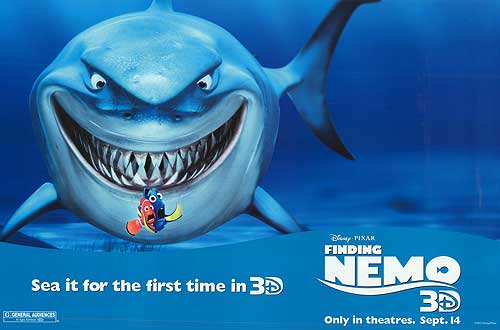
Photo by Samuel Zeller on Unsplash
It happened again today. I sometimes show movie clips to show that literary devices used in great poetry and prose are used in movies as well. Today’s lesson was Allusion. I had just hit play on the movie There Will Be Blood (2007) and the big “R” shines on the screen. From some dark corner of the room, a student utters a mock gasp and says, “My mother won’t be happy I’m watching this.”
It suits my educational purposes to show only the first 10 minutes of the film until Daniel Day Lewis holds up his oil covered hand in Macbethian fashion and my point is made. We never get to any of the R-rated content.
An R rating is given by the Motion Picture Association of America (MPAA) to a film if the language, sexuality or violence is considered inappropriate for children under 12 years of age and it recommends parental guidance for those under 17.
The student comment was a joke, but it indicates the reality that the MPAA rating system is being used by parents, even Canadian parents, to decide what movies they will allow their children to see.
This makes some sense since the purpose of the rating system is to give parents some idea as to the level of language, sexuality, and violence in the film. And we ought to be concerned about these things. Harsh language, sexuality, and violence are unsuitable for children.
The problem here is that the rating system assumes that language, sexuality, and violence are all that parents should be concerned about. There are a few things that I think Christian parents would hold higher that the trio of cinematic vice.
[click_to_tweet tweet=”The movie rating system assumes that language, sexuality, and violence are all that parents should be concerned about, but isn’t the truth even more important that the absence of this trio of cinematic vice. #parentaladvisory #parenting #truthinmovies” quote=”The movie rating system assumes that language, sexuality, and violence are all that parents should be concerned about, but isn’t the truth even more important that the absence of this trio of cinematic vice. “]
Some parents restrict their viewing, and that of their older children, according to the MPAA rating system. But when the MPAA rating system is the guide, some movies are being watched that shouldn’t be, and some are not, that should be. A “G” or “PG” rating doesn’t mean it’s good and an “R” rating doesn’t mean it’s bad.
[click_to_tweet tweet=”When the rating system is our guide, some movies are watched that shouldn’t be, and others are not, that should be. A *G* or *PG* rating doesn’t mean good and *R* doesn’t mean it’s bad. #parentaladvisory #parenting #truthinmovies” quote=”When the rating system is our guide, some movies are watched that shouldn’t be, and others are not, that should be. A *G* or *PG* rating doesn’t mean good and *R* doesn’t mean it’s bad. #parentaladvisory #parenting #truthinmovies”]
Let me illustrate what I mean using two movies: Remember the Titans, rated “PG” and Crash, rated R for language, sexual content, and violence. Both of these movies seem to explore themes related to racism.
Remember the Titans
Dove Foundation reviewers have no problem recommending Remember the Titans to families.
“Well hurray for Hollywood! At last – here’s a story about overcoming bigotry told without profanity, exploitive sex or excessive violence. What’s more, it’s downright entertaining. . . . If a film is done right, no one is going to leave the theater let down by its wholesomeness.”
One of the things the reviewer got right is that it certainly is entertaining. And if they are saying that we ought not to indulge in movies where profanity is pointless, sex exploitive and violence excessive, I also agree with them. But, I would object if they were suggesting that profanity in a movie is inherently wrong, that all sex is exploitive and that any violence is excessive. They go on:
“[W]e approve of [Remember the Titans] because it represents a concerted effort to tell an uplifting story without the usual ratio of obscene and profane material. If that sounds like a Hallmark card commercial, well, what’s wrong with leaving the theater feeling hopeful and satisfied? Isn’t that the purpose of art – to uplift the spirit of man?”
Actually, it’s not the purpose of art. There are two limited understandings of the role of art. One is that it must contain some moral instruction and the second, it must be beautiful. Art may be beautiful, and it will, on occasion uplift the spirit of man, but it ought never to do so at the expense of the truth. If it does it will legitimately be labeled “bad” art.
[click_to_tweet tweet=”Do you like feel-good movies? Art may be beautiful, and it will, on occasion uplift the spirit, but it ought never to do so at the expense of the truth. Some movies are fluff disguised as truth. #RemembertheTitans #parentaladvisory #parenting #truthinmovies” quote=”Do you like feel-good movies? Art may be beautiful, and it will, on occasion uplift the spirit, but it ought never to do so at the expense of the truth. Some movies are fluff disguised as truth. #RemembertheTitans #parentaladvisory #parenting #truthinmovies”]
Why is this movie “uplifting”? It’s quite simple. We feel good after viewing it. The movie begins with a few “good” people and a whole bunch of “bad” people. The good people are not prejudiced and the bad people are. The audience, very early on, is led to identify with the good people. That’s why we feel good after viewing it.
Through the course of the movie we shake our heads at the close-mindedness and cruelty of those racist people, but feel uplifted as more and more characters see the light and join our team of the generous and open-minded non-racists. This movie reinforces our simplistic preconceptions of the world in general and racism in particular. Worse, it reinforces, rather than challenges our simplistic preconceptions of ourselves as “good.”
This movie draws too clean a line between good and evil which is not representative of reality. It suggests racism is simple and easily overcome. It denies the reality every human being is a racist. Granted, there are degrees of racism, but to claim one is without any prejudgment on the basis of race, is like claiming one is without sin.
Remember the Titans tells us that there are many people who aren’t racist—most particularly the movie’s audience. This movie allows the audience to sit comfortably in the knowledge that they are good and open-minded citizens of the world and if the world were full of people like themselves, there would be no racism (and perhaps no sin) in the world. Certainly an uplifting message.
Sure, one function of art is to “lift up the spirit of man,” but it ought never to do so by lying. If you are going to take Philippians 4:8 at its word, you are not going to allow your children to watch this movie alone without someone to help them see where this very entertaining movie falls short of the truth—even though there is almost no language, sexual content or violence in the film.
[click_to_tweet tweet=”A movie ought never to *lift up the spirit* by lying. Philippians 4:8 means to help our children to see where a movie falls short of the truth, even though there’s no language, sex or violence. #RemembertheTitans #parentaladvisory #parenting #truthinmovies” quote=”A movie ought never *lift up the spirit* by lying. Philippians 4:8 means to help our children to see where a movie falls short of the truth, even though there’s no language, sex or violence. #RemembertheTitans #parentaladvisory #parenting #truthinmovies”]
Crash (2004)
Another of art’s aims is to challenge our faulty preconceptions of the world and ourselves. Crash won the academy award for best picture in 2005. Like Remember the Titans, this film deals with racism.
Although commending this film for its acting and cinematography, a reviewer at the Dove Foundation criticizes it because it “generates a very negative perception of America and its inter-racial relationships.” In other words, Crash does not present a view of the world (or of America) consistent with that of the reviewer. In this case, this fact ought to commend the movie rather than earn the critic’s castigation.
The Dove Foundation website gives a detailed description of all the sexual content, both shown and talked about, and it describes the acts of violence in the film. It also itemizes the language:
87 F, 17 S, 11 A, 10 N, 8 H, 3 B, 2 J, 3 C, 7 G/GD, 1 D, 2 OMG, 4 P.
I’m not even sure what all of these mean, but I think it would be a sin for me to sit and try to figure them all out, so I accept that there is strong language in this movie. For all these reasons, the film does not earn Dove Foundation Approval Rating. Granted, this rating is based on suitability for families, and it is not that.
I want to be clear, this movie is completely inappropriate for younger children. But, I recommend this movie to any adult who can see past the content. Why? Because it’s “excellent” and “praiseworthy”—it’s very well crafted—but it is also “true.” It gives us a picture of the world in that we see good and evil, not clearly embodied in individual characters, but all mixed together.
The characters I initially judged as “good” do bad things and “bad” people, good things—eventually the categories don’t work anymore. When you get to this point, you have taken some important steps toward understanding racism. I came away from this movie convinced that racism isn’t simple, nor is it a problem only out there somewhere, but resides in every human heart, most significantly in mine.
This movie doesn’t uplift the viewer but challenges his assumptions—his prejudices. It’s not a pleasant experience, but it is honest and good.
And true.
[click_to_tweet tweet=”Some movies don’t uplift the viewer but they challenge his assumptions—his prejudices. It’s not a pleasant experience, but it is honest and good. And true. #RemembertheTitans #parentaladvisory #parenting #truthinmovies” quote=”Some movies don’t uplift the viewer but they challenge his assumptions—his prejudices. It’s not a pleasant experience, but it is honest and good. And true. #RemembertheTitans #parentaladvisory #parenting #truthinmovies”]
There are many movies out there that ought not to be viewed by anyone, let alone children—some of them are rated G. It is likely that more of them are rated “R,” and ought to be avoided for their treatment of language, sexuality, and violence. But there are also those that are not only well crafted but also tell us the truth about ourselves. And sometimes they have content that earns them the “R” rating because the language, nudity, and violence actually help the film to deliver the truth in a meaningful way that changes us for the better.






